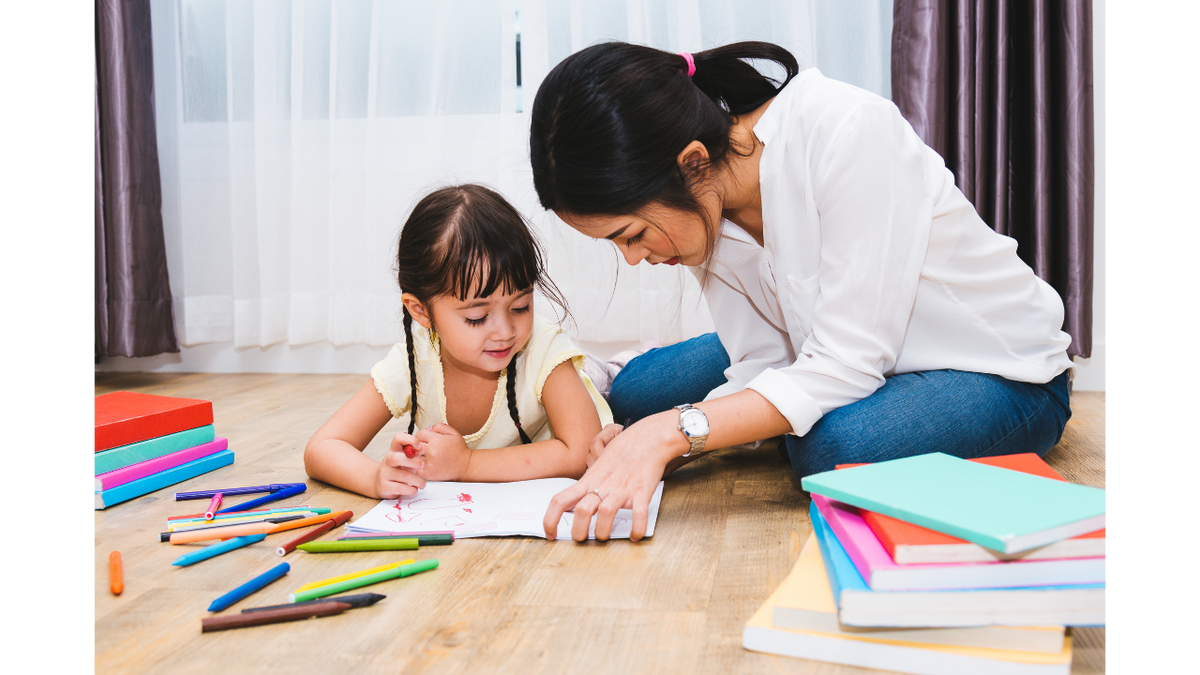
Kids Learning: An Essential Guide for Parents
|
|
Tiempo de lectura 4 min
Your Important Role in Enhancing Different Ways Kids Learn
Disclaimer: This article is for informational purposes only and is not intended to be a substitute for professional medical advice, diagnosis, or treatment. Always seek the advice of your physician or other qualified health provider with any questions you may have regarding a medical condition.
It can be very stressful as parents to make sure our toddlers are learning properly.
We outlined tips that effectively guide your little children to learn in their own ways. While it should be known that children have different learning styles, these five tips offer natural methods and actionable insights to foster your child’s brain functions.
Table of content
5 Tips for Implementing Great Ways Kids Learn Everyday
1. Cultivate a safe and stimulating environment
Creating a learning-friendly space for them is all about making a place where they can freely be curious and have fun exploring. Set-ups like a cozy reading nook and an area with a variety of non-hazardous toys can help little ones learn and grow properly. It’s also important to separate areas where they can relax and where they can be active. This kind of environment helps toddlers develop their thinking and social skills in a natural and enjoyable way.

2. Prioritize their nutritional needs
A balanced diet with vitamins and minerals can significantly affect how your children learn. Proper nutrition is crucial for the developing brain¹. Conversely, diets high in saturated fats and sugars can impair learning and memory, leaving toddlers lethargic and less focused. Malnutrition, whether due to excess or insufficient intake, can lead to long-term neural issues, affecting a child’s emotional responses, reactions to stress, and learning abilities¹.

3. Engage in interactive play
Toddlers learn best through interactive play and exploration, engaging with their environment by observing, listening, and mimicking². Incorporating playing and learning can be done smoothly with the right playing materials. For your toddler, colorful, big puzzle pieces can be used when you both work together to complete a puzzle. A lot of shapes, colors, and sizes of toys are helpful with introducing them to differences in objects—if one thing does not belong to the group or if one thing does not fit in a place. Toddlers learn new skills by watching and imitating others, until they are able to do things independently.

4. Foster quality sleep
Adequate sleep is important for cognitive function and growth hormone release in toddlers. As parents, there needs to be an established bedtime routine to ensure that babies get enough rest for their brain cells to recharge. The Sleep Foundation recommends that children between 1 and 2 years old should ideally receive 11 to 14 hours of sleep per 24 hours, including naps. This recommendation aligns with the American Academy of Sleep Medicine’s guidelines for optimal health³.

5. Incorporate managed tech into their learning
Age-appropriate apps and educational programs are interactive gateways that can enhance memory and sharpen attention. These digital tools, when used judiciously, can make learning a fun adventure for them. With the right balance, technology can become your powerful ally, laying down a robust foundation for your toddler’s learning while keeping them engaged.
While these tips and recommendations are important to help build a great learning experience for your toddler on a daily basis, it’s also important to recognize that children’s learning methods are as diverse as their personalities.

Different Learner Types
As listed by AbilityPath, there are different types of child learners and your toddler might be one or a combination of many of these⁴. When you observe children closely, each child engages with learning material in their own distinctive way. Tailoring educational experiences to align with these varied ways kids learn can significantly enhance a child’s learning process.
Visual Learners
These learners absorb information best through sight. They prefer to watch demonstrations and visual cues to understand new concepts⁴.
Kinesthetic/Tactile Learners
These active learners need to move and touch to learn effectively. They benefit from hands-on activities and learning through action⁴.
Auditory Learners
These children learn through listening. They prefer auditory instructions and discussions to process new information⁴
Logical Learners
These thinkers require logic and reasoning. They excel when they understand the reasons behind the information they’re learning⁴.
By embracing and supporting these diverse learning styles, together with the five essential tips, you can create educational experiences that resonate with your child, fostering a more inclusive and effective learning environment.
CONCLUSION
Our toddlers can learn new things through different manners and styles. By observing closely the ways kids learn, you would know what learner types they are and how to effectively guide them in their learning journey by providing a safe space to learn with your interaction, making sure they have ample sleep, and putting their nutritional needs into priority.
FAQs
How do toddlers learn the most?
It is theorized that Toddlers learn most effectively through interactive play and exploration, engaging with their environment by observing, listening, and mimicking². Encourage a variety of play and respond to their curiosity with patience and attention to support their learning.
How can I identify your child’s learning style?
To understand your child’s own approach to learning, it’s essential to pay attention to their behaviors and choices. Observing their daily activities, what captures their attention, and what they enjoy can reveal much about their learning preferences⁴.
What should I do if my toddler is struggling to learn?
If your toddler is struggling to learn, it is best to consult with a pediatrician or other qualified health provider for personalized advice.
References:
Health Victoria. (n.d.). Promoting Healthy Eating: Food and Mood Learning Outcomes. Retrieved from https://www.betterhealth.vic.gov.au/health/healthyliving/food-and-your-mood
Early Childhood Education UK. (n.d.). How Do Toddlers Learn? Retrieved from https://healthforunder5s.co.uk/sections/toddler/learning-through-play-2-3-years/
SleepFoundation.org. (n.d.). How Much Sleep Do Babies and Kids Need? Retrieved from https://www.sleepfoundation.org/children-and-sleep/how-much-sleep-do-kids-need
AbilityPath. (n.d.). Children’s Learning Styles. Retrieved from https://abilitypath.org/ap-resources/childrens-learning-styles/
Our Young Wonders. (n.d.). Five Ways Children Learn in Different Ways. Retrieved from https://www.ourkidsmom.com/five-ways-children-learn/



